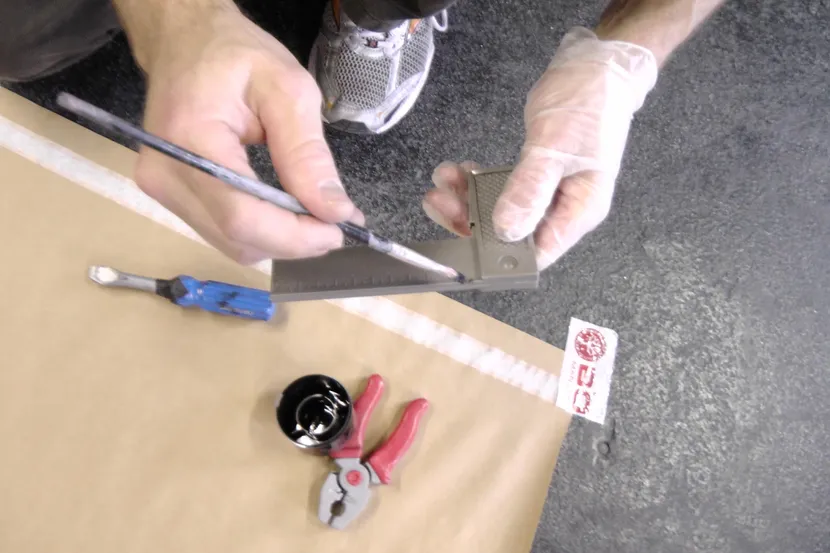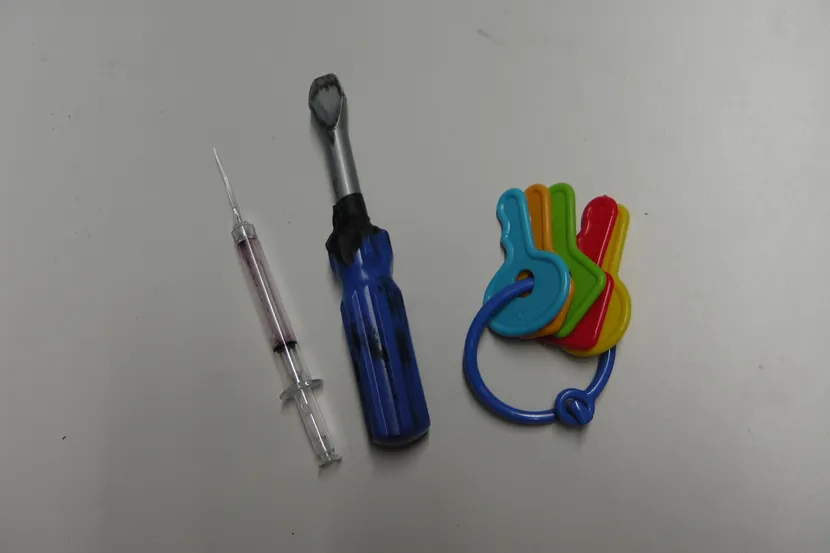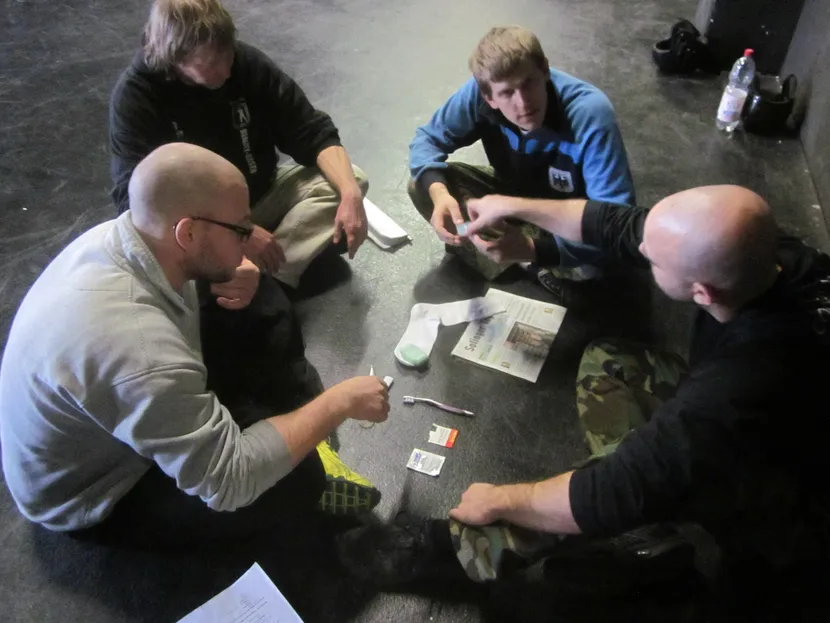May 18 | 2022
Many martial arts schools use rubber, plastic or blunt metal knives to teach students how to fend off a blade attack. Obviously, learning how to deal with knives is a mandatory part of self-defense training, especially because edged weapons are among the most widely used fighting tools in the world. But practicing only with training tools that look like knives will condition your brain for that particular edged weapon, and that can be a serious limitation.
If a criminal has a sharp piece of wood in his hand during an attack, your brain might not immediately regard the object as something that’s as dangerous as a knife. That happens because you have conditioned yourself in training, and your memories are specifically for knife attacks and not for improvised edged weapons in general.
To condition your brain to regard all sharp or pointy objects as life threatening, you need to start using a variety of training tools. A sharp piece of wood in the hands of a schoolboy is just as deadly as a steel knife in the hands of a terrorist. That piece of wood can take out your eye, puncture your stomach or sever an artery as easily as a knife can.
In fact, I know a knife maker in Thailand who crafts all his edged weapons from hardwood. Law-enforcement officers are shocked to see how hard and pointy these wooden weapons are when I show them in the classes that I teach.
To simulate a sharp piece of wood — or a shank that’s used in prison — you can cut a piece of foam into the correct shape and then paint it the color of wood.
Obviously, whenever you use an object in contact training, you need proper eye protection for yourself and your partner. That will enable to you focus on your partner’s attack with a realistic-looking object, giving you the opportunity to imprint the survival experience on your memory.
Then, if a real attacker grabs a piece of wood and comes at you, you will recall the training experience and immediately regard the object as life threatening, which will reduce your reaction time and render decision making more accurate. The more realistic the scenarios in which you engage, the better your muscle memory will be.

This is a photo of a 10-year-old boy in a classroom, holding a broken piece of wood in a threatening manner. Such an improvised edged weapon must be treated the same as a knife threat because it’s just as lethal if the point penetrates your body.

One of my students adds touches of black paint to plastic toys to make them look like real metal tools. The next step is to scratch up the paint a bit to make them look used. The “metal” screwdriver is the edged weapon.

Here is that same screwdriver when finished, along with a “syringe.” This pen syringe is the type that’s sold during the Halloween season, and it contains a red fluid that looks like blood. I remove the writing pen, roll up a piece of aluminum foil and stick it in the hole to look like a needle, which is an edged weapon. The toy keys represent a set of real keys, which can be used in training as yet another edged weapon.

German students in my Improvised Weapons course are making prison weapons to better understand the mind of a criminal. The end of the plastic toothbrush was sharpened by filing it down on a concrete floor, making it an edged weapon that can penetrate the human body.

Here is a photo I took for my research on human conflict. It’s a 13th-century bone knife (left) excavated near a German castle.

In an Australian museum, I took photos of South Pacific edged weapons made from bone. If you want a good example of how deadly sharpened bone can be, watch the “T-bone neck stab” scene in the Gerard Butler movie Law Abiding Citizen(2009).
Taking it a step further, you should not train to fend off just sharp pieces of wood; you should train to stop attacks with anything that can function as an edged weapon. I often buy toys that look like real tools: screwdrivers, hammers, pliers, etc. The plastic tools can be painted and then scratched up to make them resemble the real thing. That plastic screwdriver that’s thrust in your direction in the dojo may not be a real weapon, but it will be a real experience.
If I have learned one thing while traveling and teaching around the world, it’s that criminals use a variety of edged weapons. As a professional self-defense instructor, I’m always using edged-weapon training tools when teaching my Knife Survival courses — the same courses I have taught to the FBI, the German counterterrorist team GSG9, the U.S. Marshal Service, the Bulgarian Secret Service and the Israel Police Academy, all of which are units that need to keep it “real.”
Whenever I train people who work in a police department or at a jail or prison, they show me the latest weapons they’ve confiscated from the bad guys. Also, when I visit museums, I always document the weapons I come across for my ongoing human-conflict research. This gives me more ideas for training. So after you make your wooden-shank replica from foam, consider fashioning a foam replica of a bone knife or similar weapon for future training. The possibilities are endless.
BE A HARD TARGET
